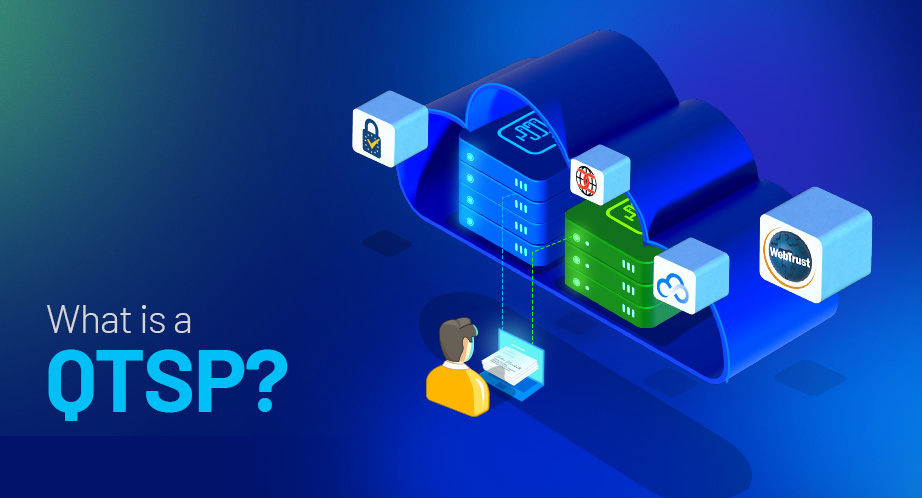In an increasingly digital world, Qualified Trust Service Providers (QTSPs) emerge as crucial figures. They safeguard the integrity and security of our online activities.
This comprehensive guide delves into the fascinating realm of QTSPs. It explores their critical role and the intricate process of becoming one.

What is a Qualified Trust Service Provider (QTSP)?
As digital footprints become interwoven with every aspect of life, ensuring the trustworthiness and security of these interactions becomes paramount. This is where QTSPs step in, acting as the guardians of trust in the digital landscape.
Qualified Trust Service Providers operate within a framework of established regulations, such as the European Union’s (EU’s) eIDAS Regulation. This guarantees adherence to stringent legal and security standards. It bolsters confidence in electronic transactions for users, clients and stakeholders alike, fostering a secure and reliable environment for conducting business and interacting digitally.
What is the role of a QTSP?
The contributions of Qualified Trust Service Providers extend beyond simply ensuring compliance. They offer a diverse array of qualified trust services that act as building blocks for secure and reliable digital interactions. These services include:
- Qualified Electronic Signatures (QES): QES allow people to electronically sign documents with the same legal validity as handwritten signatures in many jurisdictions. This streamlines workflows, eliminates the need for physical documents and potentially shifts the burden of proof in legal disputes.
- Qualified Electronic Seals (QESeal): Like seals used on physical documents, QESeals serve as the digital equivalent. They ensure the authenticity and integrity of electronic documents. They empower organisations to safeguard the integrity of sensitive documents like contracts and certificates.
- Qualified Timestamping Services (QTS): Imagine having an indisputable record of the exact time a digital document was created or modified. This is precisely what QTS offers. They provide a verifiable and tamper-evident record, crucial for situations where chronological order or data integrity is critical - such as the long-term validation of electronic documents.
- Qualified Electronic Registered Delivery Services (QERDS): Establishing a verifiable chain of custody for electronic data is crucial for various scenarios. QERDS provides evidence of sending and receiving electronic data, ensuring accountability and non-repudiation.
By offering this comprehensive suite of qualified trust services, QTSPs play a pivotal role in facilitating secure and reliable digital transactions, fostering innovation and growth in the digital economy. Ascertia, at the forefront of this critical domain, empowers individuals and organisations to navigate digital interactions with confidence and trust.
Why are Qualified Trust Providers important?
By offering these qualified trust services, QTSPs protect the very fabric of every digital interaction. Their services are instrumental in:
- Facilitating secure and reliable digital transactions: Whether it is signing contracts, accessing government services or conducting financial transactions online, QTSPs ensure the integrity and security of these transactions - fostering trust and confidence in the digital economy.
- Reducing administrative burdens: QES eliminates the need for physical documents, manual signatures and storage. They streamline workflows and save time and resources for individuals and organisations.
- Enhancing legal security: QES and other qualified trust services provide a strong legal foundation for electronic transactions, potentially shifting the burden of proof in disputes to the signer. This ensures the enforceability of electronic agreements.
- Promoting innovation and growth: By fostering trust and security in the digital ecosystem, QTSPs pave the way for innovation and growth. They enable new business models and facilitate secure online transactions across various sectors, countries and continents.
Put simply, QTSPs are not just technical service providers. They are essential figures in the digital ecosystem, safeguarding trust, security and efficiency in online transactions.
Becoming a Qualified Trust Service Provider
If you are intrigued by the world of cybersecurity and see yourself contributing to a secure digital future, then becoming a QTSP might be the perfect path for you. But where do you begin?
This comprehensive guide will walk you through every step of the journey, from understanding the essential requirements to navigating the application process. This roadmap will equip you with the knowledge and resources you need to become a QTSP.
Understanding and achieving compliance
Becoming a QTSP lies in achieving compliance with relevant regulations and legal requirements. This ensures your services meet the stringent standards set by authorities, establishing your credibility and fostering trust.
Compliance is not a box-ticking exercise. It is a commitment to upholding the integrity of electronic transactions and creating a secure environment for users. As you navigate the intricate legal landscape, adhering to these standards becomes essential, building confidence among clients, users and stakeholders.
Navigating the legal and regulatory landscape
Becoming a Qualified Trust Service Provider means navigating a web of legal and regulatory frameworks governing digital trust services. This framework safeguards the integrity of electronic transactions, protects personal privacy and, again, fosters trust in the digital economy.
Key regulations like the EU’s eIDAS Regulation and its revision, eIDAS 2.0, outline the specific obligations and responsibilities QTSPs must fulfil. Understanding and navigating these regulations are about more than compliance. They allow you to contribute to shaping the future of secure digital interactions.
A step-by-step guide to becoming a Qualified Trust Service Provider
1. Understanding eIDAS Regulations
Your journey as a QTSP requires a deep understanding of the EU’s eIDAS Regulation and its revision, eIDAS 2.0.
The eIDAS Regulation:
- Adopted in 2014, it established a harmonised framework for electronic identification and trust services across the EU.
- It promotes a secure and interoperable digital environment, fostering trust and facilitating seamless electronic services.
- eIDAS 2.0 was recently approved by the European Parliament and its final text is expected to modify the eIDAS framework in the coming months.
eIDAS 2.0 aims to:
- Address shortcomings of the previous version.
- Introduces a new European digital identity framework.
- Outline legal foundations for new electronic trust services.
- Mandate specific requirements for QTSPs to ensure security, interoperability and trust.
Beyond eIDAS:
- National requirements issued by each EU member state may exist, supplementing or elaborating on eIDAS based on their specific legal context.
- Staying updated on both eIDAS and eIDAS 2.0 and national requirements is crucial for QTSPs to maintain compliance and uphold trust.
2. Fulfil your legal and regulatory obligations
Becoming a QTSP comes with a set of general legal obligations and responsibilities. These ensure the security, transparency and integrity of your services to foster trust within the digital ecosystem.
Here are some key aspects to consider:
- Data protection and privacy – Uphold stringent data protection regulations like the General Data Protection Regulation (GDPR). This requires robust data security measures, user content and transparent data processing practices.
- Interoperability and technical standards – Adhere to interoperability standards outlined in eIDAS to ensure seamless communication and collaboration with authorities and industry stakeholders.
- Service measures – Implement robust security measures like encryption, secure systems and audit trails to safeguard the integrity and confidentiality of electronic transactions.
- Service transparency – To foster informed decision-making and trust, provide users with clear and comprehensive information. This includes transparent terms, conditions and pricing.
- Compliance monitoring – Establish and maintain strong internal mechanisms for ongoing compliance monitoring. This includes regular audits, risk assessments and proactive adaptation to evolving legal requirements.
- User education – Educate users about your trust services. This includes its functionalities, benefits and potential risks. It enhances user awareness and contributes to a safer digital environment.
By fulfilling these obligations, you demonstrate your commitment to responsible service.
3. Establish your legal entity and framework
Becoming a QTSP requires setting up a legal entity and establishing a robust compliance framework. This ensures you meet the legal requirements and operate within the regulatory boundaries.
Here’s what this step entails:
- Corporate structure – Choose a legal structure that adheres to national regulations. This typically involves establishing a legal entity within the minimum share capital and mandatory civil liability insurance as required by your specific country.
- Compliance framework – Develop and implement a framework that integrates with the regulatory landscape. This framework should outline policies and procedures to meet QTSP requirements, including:
- Certificate Policies (CP): Define the lifecycle of electronic certificates issued by your organisation.
- Certificate Practices Statements (CPS): Detail the technical practices for managing certificates.
- Internal Information Security Management Systems (ISMS): Implement controls and procedures to manage information security risks, with certifications like ISO 27001 offering added value.
- Documentation – Prepare thorough and accurate documentation - including articles of incorporation, compliance policies or an organisational structure - to facilitate the licencing process.
By establishing a compliant legal entity and framework, you demonstrate your commitment within the legal and regulatory boundaries, setting yourself up for success as a trusted service provider.
4. Navigating the licencing and accreditation process
Securing your QTSP licence involves navigating a comprehensive licencing and accreditation process. This process ensures you meet all the requirements to operate within the established framework. Here is what you can expect:
- Application submission: Submit a detailed application to your national regulatory authority. This typically includes information about your organisation’s structure, compliance framework, security measures and the specific trust services you plan to offer.
- Verification and assessment: Prepare for thorough verifications and assessments by the supervisory authorities. This process involves scrutinising your technical infrastructure, security protocols and compliance practices to ensure they meet regulatory requirements.
- Audit requirements: Be prepared for potential audits by the authorities. These audits validate your adherence to regulations, assessing the effectiveness of your security measures, data protection practices and overall compliance with specific trust service requirements. In Europe, eIDAS requires regular audits performed by a Conformity Assessment Body (CAB) to validate your compliance.
- Issuance of licence: Upon successfully completing the licencing process and demonstrating compliance with all regulatory criteria, the competent authority will issue the necessary licence and authorisation for you to operate as a Qualified Trust Service Provider. In Europe, accredited QTSPs are listed on the European Trusted List along with trust services they are authorised to provide.
By successfully navigating this process, you will be granted the licence to legally operate as a QTSP. It allows you to offer your services within the established regulatory framework.
Mastering the technical requirements
Becoming a Qualified Trust Service Provider demands expertise in technical requirements. It ensures the security, integrity and confidentiality of your services. Here is what you need to understand:
Core technical aspects
- Cryptographic standards: Adhere to established cryptographic standards for robust encryption and digital signatures, safeguarding sensitive data during transmission and storage.
- Secure key management: Implement robust practices for generating, storing and distributing cryptographic keys to prevent unauthorised access and misuse.
- Secure system architecture: Design and implement secure systems with proper access controls, secure communication channels and resilient infrastructure to mitigate vulnerabilities and threats.
Standards and organisations
- European Telecommunications Standards Institute (ETSI): ETSI provides guidelines and technical requirements for trust services, including digital signatures. This is through its Technical Committee on Electronic Signatures and Infrastructure (TC ESI).
- European Agency for Cybersecurity (ENISA): ENISA collaborates with the European Commission to ensure the secure implementation of eIDAS. It offers security recommendations and promotes the use of qualified trust services.
- European Committee for Standardisation (CEN): CEN defines high-quality standards for products and services, with the EN 419 241 series offering specific guidance for QTSPs on security requirements.
- Common Criteria (ISO/IEC 15408): Common Criteria is an international standard for evaluating and certifying the security of IT products and systems. It is relevant to ensuring the security of trust services and digital signature solutions.
Staying ahead of the curve
Examples like Ascertia’s achievement in securing the highest level of Common Criteria evaluation for our ADSS SAM Appliance demonstrate the continuous advancements in technical security for QTSPs.
By staying updated on evolving standards and best practices, you can ensure your services offer the highest levels of security and maintain user and regulatory trust.
eIDAS 2.0 and future considerations
The world of Qualified Trust Service Providers is dynamic, and navigating future developments is crucial for long-term success. Here are two key considerations to keep in mind:
Adapting to eIDAS 2.0 and beyond
If there is one constant with regulations, it is that they are constantly evolving. With the introduction of eIDAS 2.0 and future revisions, QTSPs must remain agile and adaptable.
This means proactively monitoring regulatory changes, updating your services to comply with new requirements and maintaining the trust of users and authorities.
eIDAS 2.0 introduces several new Qualified Trust Services (QTs) to consider:
- Qualified Electronic Archiving (QEA) - Securely store and preserve electronic documents and data over the long term, ensuring their integrity, authenticity and accessibility.
- Qualified Electronic Attestation of Attributes (QEAA) - Facilitate the secure verification of electronic attributes associated with individuals or entities, enhancing trust in digital identities and transactions.
- Qualified Electronic Ledgers (QEL) - Offer trusted and immutable electronic ledgers for recording and managing transactions in various domains, guaranteeing integrity and transparency.
- Management of Remote Signature Creation Devices (MRQSCD) - Enable remote signing devices' secure management and operation, ensuring compliance and security in remote signing.
Integrating with the European Digital Identity Wallet
eIDAS 2.0 introduces the new European Digital Identity Wallet (EDIW) as a cornerstone of the European digital identity framework.
As a QTSP, you will need to prepare to integrate and support this new infrastructure. This involves understanding the technical specifications, interface requirements and authentication mechanisms of the EDIW to ensure:
- Seamless integration – Ensure your services integrate smoothly with the EUDIW for a positive user experience.
- Interoperability – Align your systems and processes with EUDIW standards to enable cross-border digital interactions and maximise the reach of your services within the European market.
Unlock the power of trust: Your journey to Qualified Trust Service Provider with Ascertia
The digital realm thrives on trust, and QTSPs are the architects of this trust ecosystem. Ascertia empowers individuals and organisations to become pillars of trust by guiding them towards becoming Qualified Trust Service Providers.
This comprehensive guide has equipped you with the foundational knowledge to embark on your QTSP journey. Ascertia stands beside you every step of the way, offering:
- Unparalleled expertise: Our team has a deep understanding of the legal, regulatory and technical complexities surrounding QTSPs.
- Streamlined solutions: Our innovative technology simplifies compliance, enabling you to deliver trust services efficiently.
- Unwavering commitment: We share your dedication to building a secure and reliable digital ecosystem grounded in trust and transparency.
Shape the digital landscape with trust. Contact us today to unlock your potential as a Qualified Trust Service Provider.


